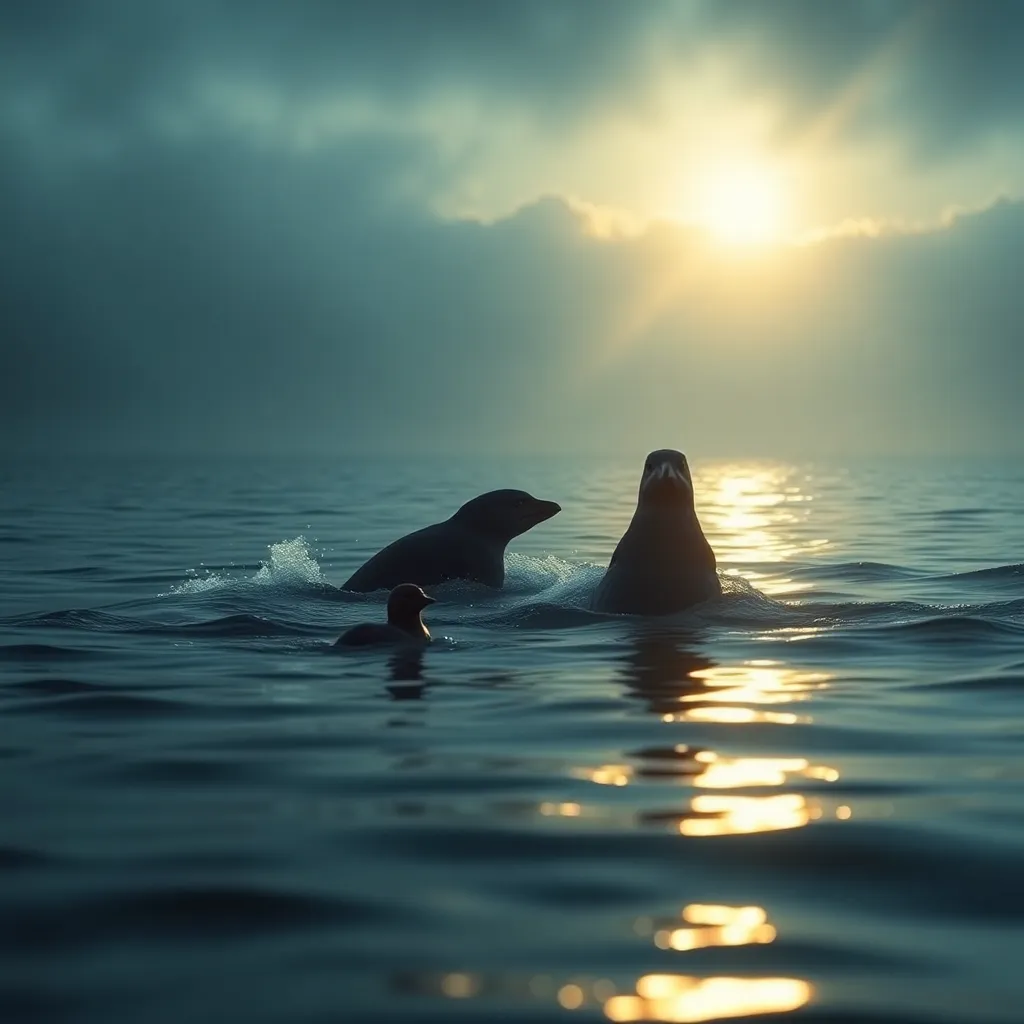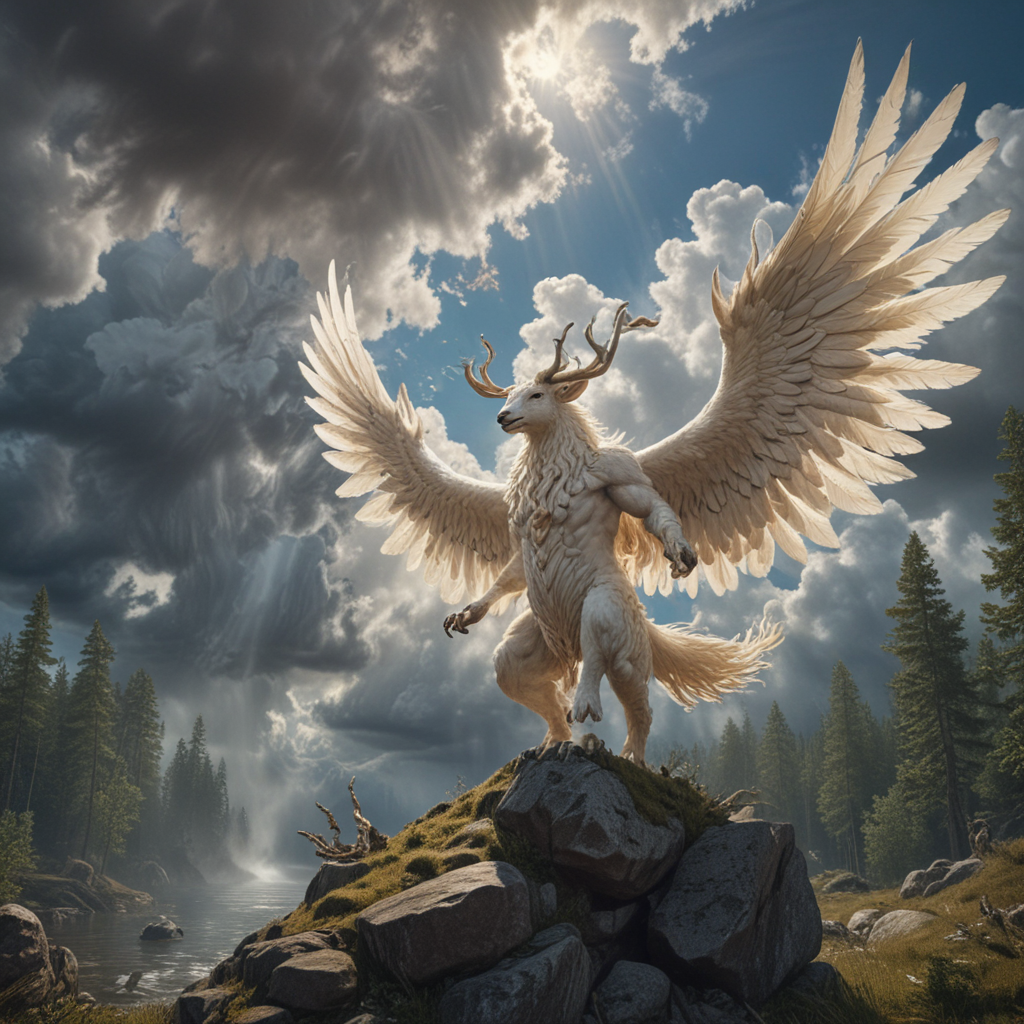Selkie Stories of the North Atlantic: A Comparative Study of Island Traditions
I. Introduction
Selkie mythology, steeped in the rich traditions of the North Atlantic, captures the imagination with tales of transformation, love, and the deep connection between humanity and the sea. Within these narratives, selkies—mythical creatures that can shed their seal skins to become human—embody the fluidity of identity and the complexities of human emotion. This article aims to explore selkie stories across various island cultures within the North Atlantic region, highlighting their significance and cultural diversity.
The North Atlantic is home to a unique tapestry of cultures, each influenced by the sea and its bounty. From the rugged coasts of Scotland to the lush landscapes of Ireland and the stark beauty of the Faroes and Iceland, selkie stories reflect the values, fears, and aspirations of these communities. This comparative study endeavors to delve into the historical context, geographic variations, common themes, and contemporary representations of selkie folklore.
II. Historical Context of Selkie Legends
The origins of selkie stories can be traced back to Norse and Celtic folklore, where the allure of the sea intertwined with the lives of coastal communities. Norse sagas often depicted beings that could traverse between realms, while Celtic legends infused these tales with a deep sense of spirituality and connection to nature.
Maritime culture played a pivotal role in shaping selkie narratives. Fishermen and seafarers, reliant on the ocean for their livelihoods, created stories that reflected their understanding of the natural world. Over centuries, these tales evolved, adapting to changing social and environmental contexts while retaining their core themes of transformation and longing.
III. Geographic Variations in Selkie Tales
Selkie stories vary significantly across the North Atlantic, each region offering its own interpretations and nuances.
A. Selkie stories from the Scottish Isles
In the Scottish Isles, selkies are often portrayed as tragic figures, caught between two worlds. Tales frequently involve a human falling in love with a selkie, only to face heartbreak when the selkie is compelled to return to the sea.
B. Irish interpretations of selkie mythology
Irish legends emphasize the romantic aspects of selkie tales, often celebrating the beauty and mystery of these creatures. The motifs of love and loss are prominent, showcasing the emotional depth of human-selkie relationships.
C. Perspectives from the Faroes and Iceland
The Faroes and Iceland present a more rugged interpretation of selkie mythology, where the harshness of the environment mirrors the struggles faced by the characters. Here, selkies are sometimes depicted as more mischievous, further complicating their relationships with humans.
D. Influence of geography on storytelling and themes
The geography of each region significantly influences the storytelling techniques and themes. Coastal landscapes, weather patterns, and local customs shape how selkie stories are told, making each narrative unique to its cultural context.
IV. Common Themes in Selkie Stories
Despite the geographic variations, several common themes resonate throughout selkie stories.
A. Transformation and duality: human vs. seal
The theme of transformation is central to selkie tales, reflecting the duality of existence. Selkies embody both human and animal characteristics, symbolizing the interconnectedness of all living beings.
B. Love, loss, and the longing for freedom
Many selkie stories explore themes of love and loss, highlighting the deep emotional bonds that can form between humans and selkies. The longing for freedom often serves as a poignant reminder of the sacrifices made in the name of love.
C. The motif of the stolen skin
The motif of the stolen skin is a powerful symbol in selkie folklore. It represents not only the loss of identity but also the consequences of human desire and greed. The act of taking a selkie’s skin often leads to tragic outcomes, reinforcing the idea that true love requires respect for autonomy.
V. Symbolism and Cultural Significance
Selkies hold significant cultural symbolism within the communities of the North Atlantic.
A. Selkies as symbols of nature and the sea
Selkies represent the untamed nature of the sea, embodying its beauty and danger. They remind communities of the ocean’s power and the delicate balance between humans and the natural world.
B. Reflection of human emotions and relationships
Through their stories, selkies reflect the complexities of human emotions. Themes of love, longing, and the search for belonging resonate deeply, making selkie tales relevant across generations.
C. How selkie stories convey social values and warnings
Selkie folklore often serves as a cautionary tale, warning against the consequences of selfishness and the importance of respecting the natural order. These narratives convey social values that emphasize community, love, and the interconnectedness of life.
VI. Contemporary Adaptations and Representations
In modern literature and film, selkie narratives continue to captivate audiences, demonstrating their enduring relevance.
A. Selkie narratives in modern literature and film
Contemporary adaptations often reimagine selkie stories, exploring new themes while preserving the essence of the original folklore. Works such as “The Secret of Roan Inish” and various novels reflect the ongoing fascination with selkie mythology.
B. Influence of globalization on traditional tales
Globalization has introduced new perspectives to selkie narratives, blending traditional elements with contemporary storytelling techniques. This fusion often revitalizes interest in folklore, making it accessible to wider audiences.
C. Preservation of selkie folklore in contemporary culture
Efforts to preserve selkie folklore include festivals, storytelling events, and academic research. These initiatives ensure that the rich tradition of selkie stories continues to be passed down through generations.
VII. Comparative Analysis of Island Traditions
A deeper comparative analysis reveals both similarities and differences in how various island cultures approach selkie storytelling.
A. Similarities and differences in storytelling techniques
While the core themes of selkie stories remain consistent, storytelling techniques vary. Oral traditions in the Scottish Isles may differ from written adaptations in Ireland, showcasing the diversity of narrative forms.
B. Impact of local customs and beliefs on selkie stories
Local customs and beliefs heavily influence selkie tales. For instance, the integration of local fauna and environmental factors shapes how selkies are perceived and portrayed within each culture.
C. The role of oral tradition in maintaining cultural identity
Oral tradition plays a crucial role in preserving cultural identity. Selkie stories, passed down through generations, serve as a means of connecting communities to their heritage and shared history.
VIII. Conclusion
This comparative study reveals the rich tapestry of selkie stories across the North Atlantic, highlighting their historical origins, geographic variations, and cultural significance. The enduring relevance of these tales speaks to their ability to resonate with contemporary audiences, reflecting timeless human emotions and relationships.
As we continue to explore the depths of folklore studies and cultural preservation, selkie stories will undoubtedly remain a poignant reminder of our connection to the sea and the mysteries that lie within.



